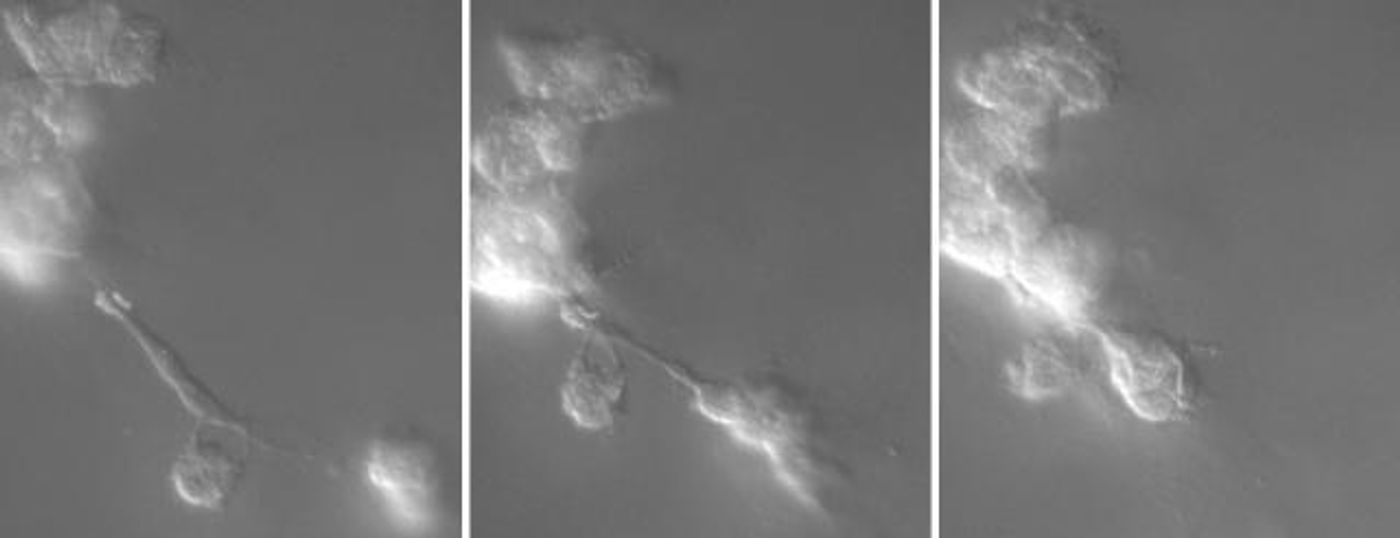Melanoma Captured in Action
Melanoma is the most serious skin cancer and can be quite aggressive, as seen in the following video. Researchers at the University of Iowa captured them as they invaded a gel, quickly joining up with other tumor cells and forming tumors. Reporting in PLOS One, computer software helped the investigators study the formation of melanoma and breast tumors. It was found that there are similarities in the way the two tumor types behave as the cells join up and build tumors.
“It upholds our hypothesis that coalescence is so similar that there’s got to be the same molecules and mechanisms that do it, and we may be able to find a drug that shuts tumor formation down without being toxic to healthy cells in the body,” said Biology Professor David Soll, the corresponding author of the paper.
Healthy skin cells and melanoma cells were both tracked by the scientists in real time - these videos from the Soll lab show melanoma cells, above, while healthy cells are shown below. The melanoma cells move continuously, and appear to expand in all directions. They also divide into more cells and join up into clusters together; the lab showed that one cell covered a space three times as large as itself to meet up with other cells in only four hours. Another test showed an 80 percent accretion rate: in only 72 hours, 24 cells or small cell clusters had coalesced as a cancerous tumor.
Soll’s team has previously demonstrated that human breast cancer cells can extend a cable of sorts that helps to build bridges between cells and aggregate them. Melanoma cells behave in a similar fashion, but with some differences in speed. Melanoma cells can be “fast as lightning,” Soll said. “They don’t sit still. They’ve got ants in their pants.”
Breast cancer cells, however, are slower to get moving and building tumors. In their previous PLOS One report, Soll’s team learned that breast cancer cells wait an average of 100 hours and dividing into more cells during that time, before creatinging “clonal islands,” which are small clusters that slowly join and form large tumors.
Soll suggested that melanoma cells may move around a lot in contrast because of their evolutionary roots. Skin cells that form the pigment melanin, called melanocytes, are derived from a type of cell that is created in the spinal column, neural crest cells. Once the specialized melanocytes are created, they must travel through the tissue to settle in their destination, the top layer of the skin. “They’re professional crawlers,” Soll explained. “They were born to move.”
The scientists have appeared to show that melanoma cells have mobility that is similar to that of melanocytes. However, the melanoma cells are more like the cables of breast cancer cells as they come together, reeling in other cells or cell clusters. Soll was intrigued, and went on to screen monoclonal antibodies to find one that would be effective against tumor development. Two were found, anti-beta 1 integrin/(CD29) and anti-CD44, which halted tumor creation in both types of cancer.
“What’s so cool is the same drug that stops breast cancer cells from undergoing coalescence also stops melanoma cells from undergoing coalescence, despite these cancers’ whole history being different,” said Soll. “That means there’s a commonality despite the different origins. And that also means there might be a magic bullet (to stop tumor formation) for all cancers.”
Sources: AAAS/Eurekalert! via University of Iowa, PLOS One










